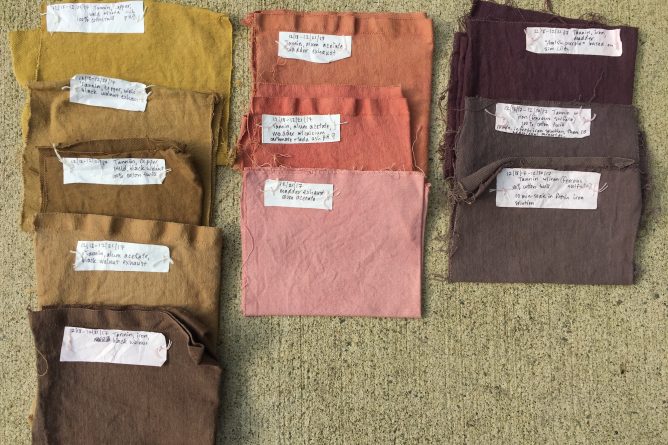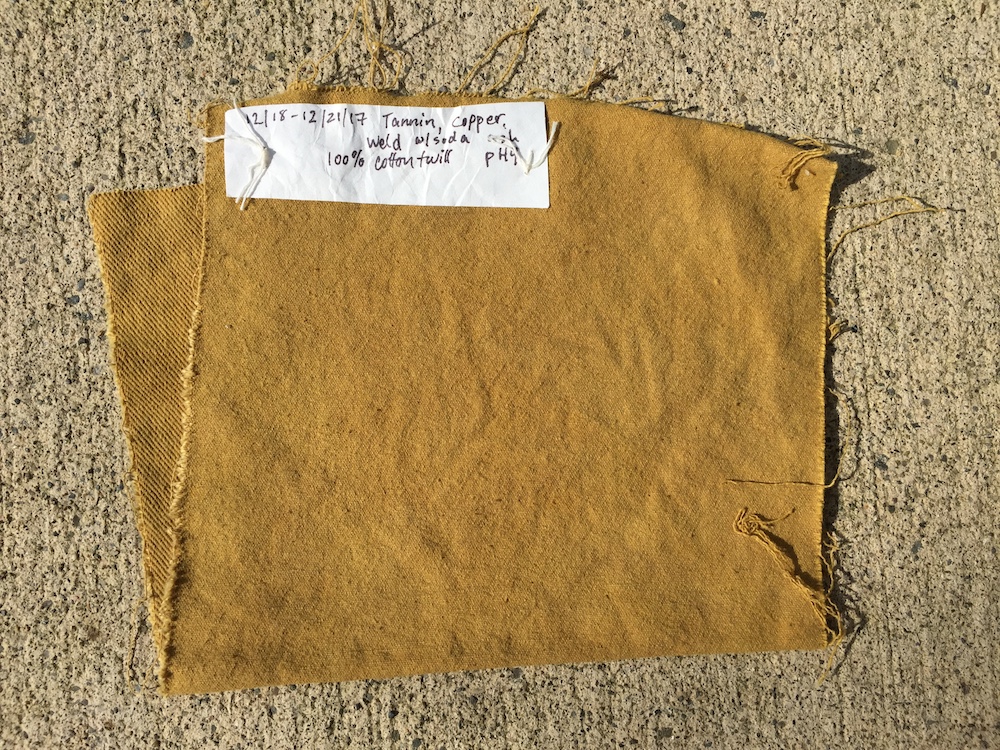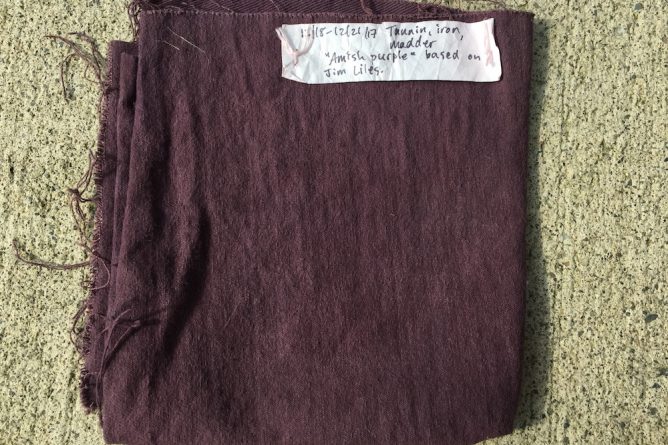If you read my post about the tannin-iron-madder experiment, you may have noticed that I divided the original dyebath in half. I didn’t explain why at the time. My rationale was this: I worried that the iron would affect the subsequent colors I got from the exhausted dyebath.
For the rest of the experiment, I prepared small pieces of cotton cloth with three different treatments, which I’ll describe below.
You can read my original post here for a description of how I made the madder dyebath and prepared the fiber.
Usually when I’m extracting madder roots, I use calcium carbonate and soda ash to make the water mineral-rich and alkaline. The soda ash is inspired by a comment by Rita Buchanan in A Weaver’s Garden that “the pigment alizarin dissolves better in alkaline solutions.” In Jim Liles’ recipe for “Amish Madder Purple” he directs you to use calcium or chalk in the dyebath (though he specifies calcium acetate). He doesn’t mention pH, so for that sample I didn’t mess with the pH (which was 7). Continue reading “More Madder on Cotton”



